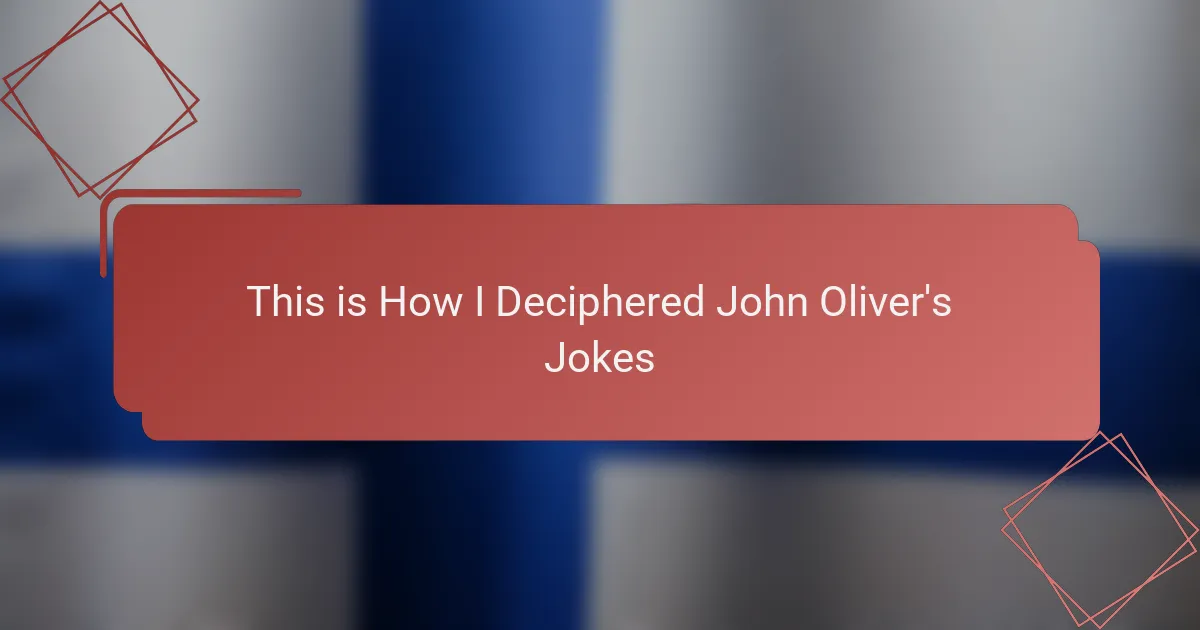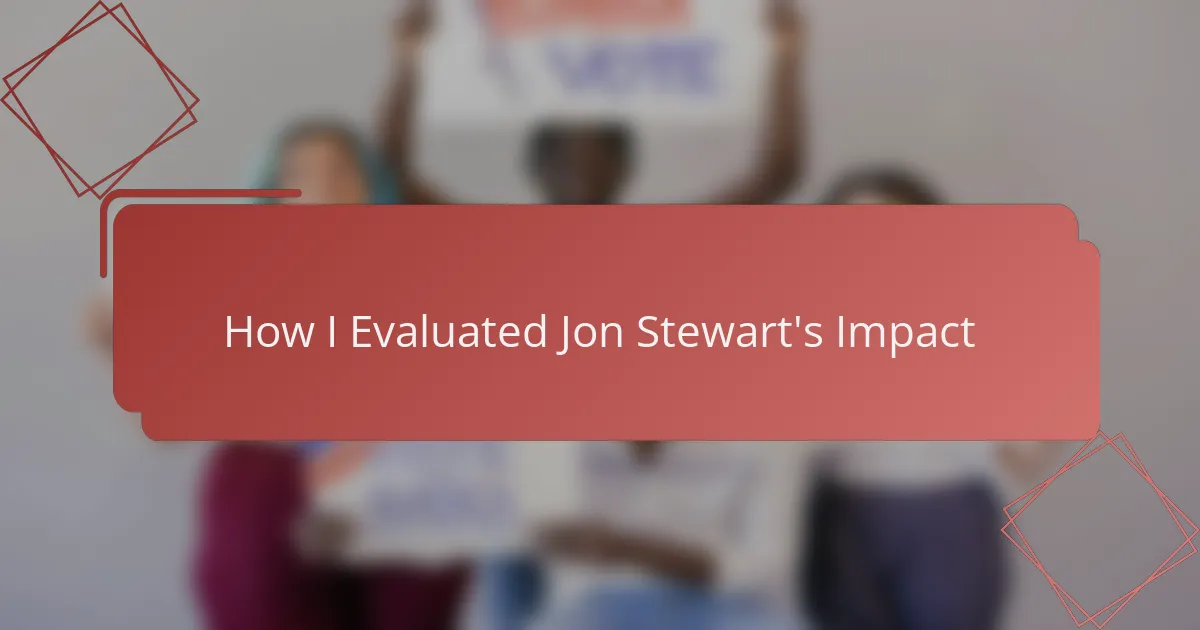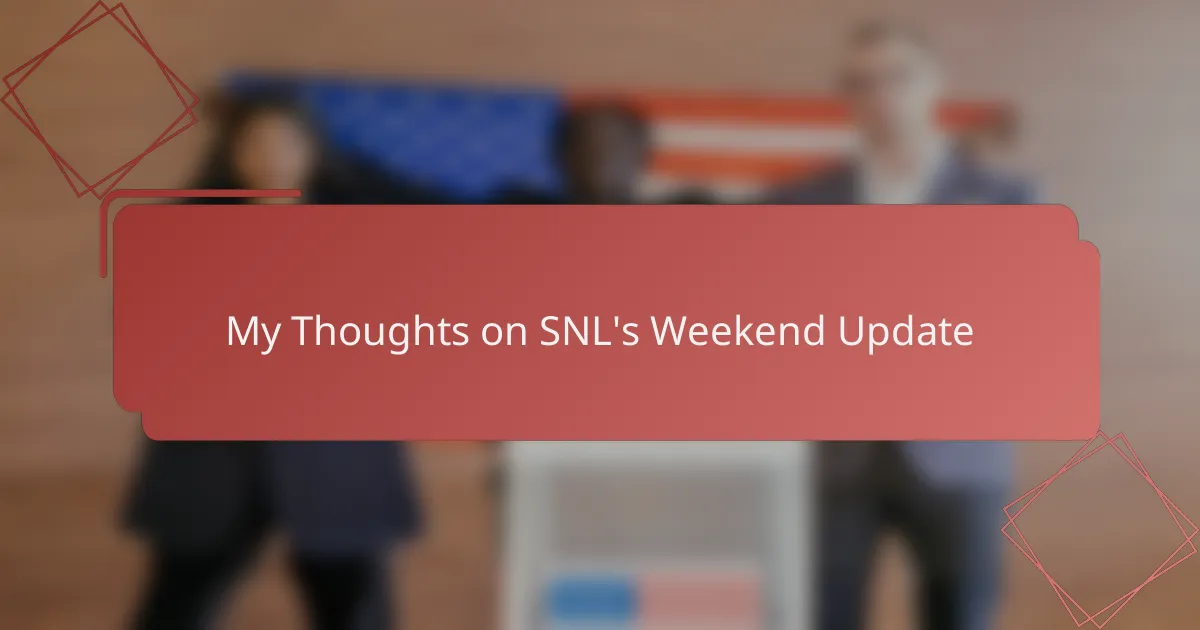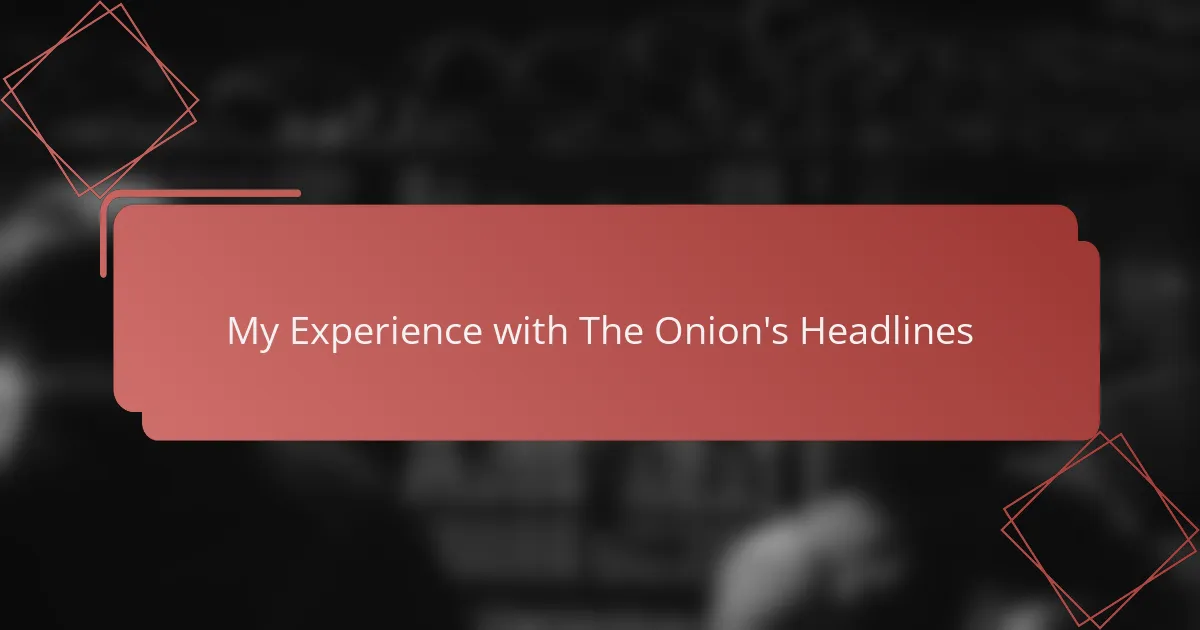Key takeaways
- Political satire combines humor with critique, requiring an understanding of current events for deeper appreciation.
- Key elements of satire include exaggeration, contextual awareness, and emotional resonance, enhancing the impact of the message.
- Decoding satire involves identifying the target, researching context, and analyzing tone, transforming entertainment into insightful commentary.
- Engaging in discussions using satire analysis fosters thoughtful conversations and bridges understanding among different perspectives.
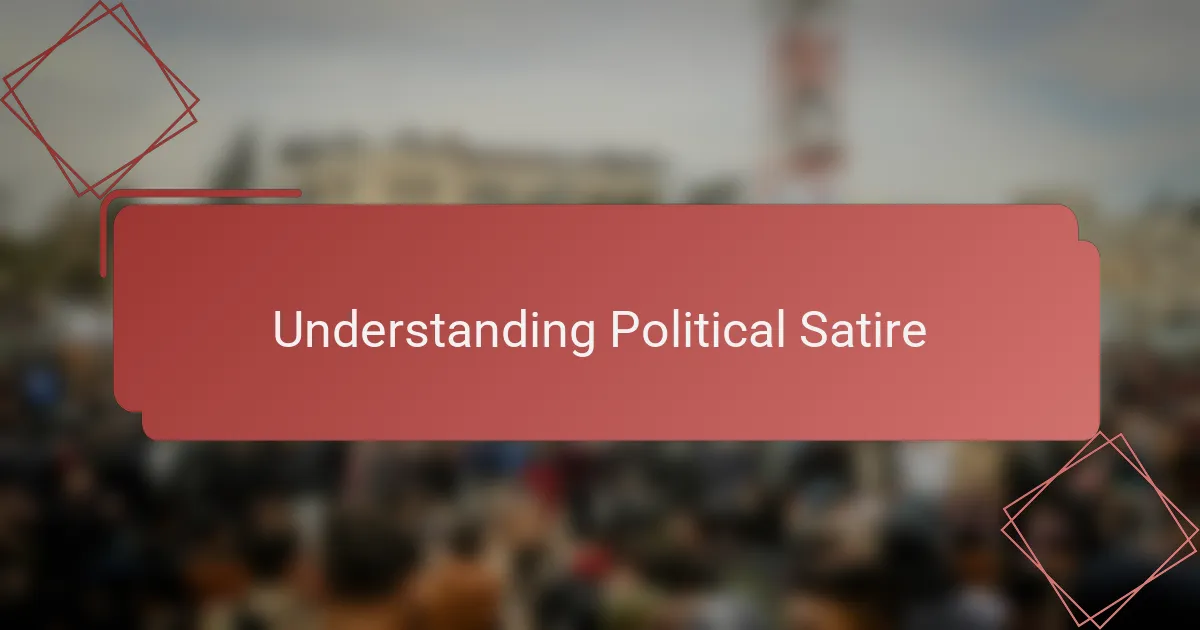
Understanding Political Satire
Understanding political satire is like learning a new language full of irony, exaggeration, and hidden meanings. When I first tried to get John Oliver’s jokes, I realized that knowing a bit about current events helps me appreciate the sharpness behind his humor. It’s not just about laughing but seeing the clever critique underneath.
| Political Satire | Regular Comedy |
|---|---|
| Uses irony and exaggeration to critique political issues | Focuses mainly on entertainment and humor without deeper critique |
| Requires some background knowledge of politics and current affairs | Usually understandable without prior knowledge |
| Invokes thought and challenges opinions while making you laugh | Primarily aims to amuse without necessarily provoking reflection |
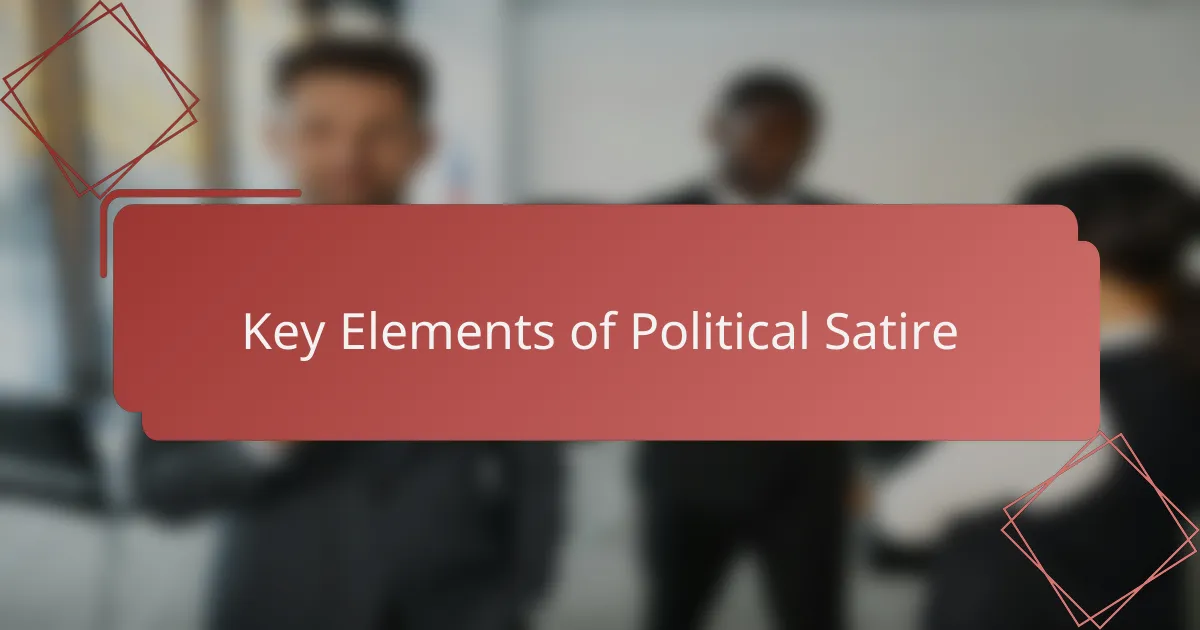
Key Elements of Political Satire
Political satire often hinges on sharp contrasts between the absurdity of political realities and their presentation. When I first paid close attention to John Oliver’s jokes, I realized how crucial his ability to balance humor with biting critique is. This blend makes complex political issues not only approachable but also deeply thought-provoking.
What I find most fascinating is how satire uses exaggeration to highlight truths that might otherwise go unnoticed. It’s like shining a spotlight on the flaws of political figures and systems, but wrapped in wit and irony. Here are some key elements that I’ve found essential in understanding political satire, especially in John Oliver’s work:
- Exaggeration and Irony: Amplifying the absurd aspects of politics to reveal deeper truths.
- Contextual Awareness: Leveraging current events and political knowledge for effective humor.
- Wit and Wordplay: Crafting clever language that serves both comedy and critique.
- Emotional Resonance: Connecting the joke with the audience’s frustrations or hopes.
- Moral Underpinning: Often carrying a subtle or overt message about justice or accountability.
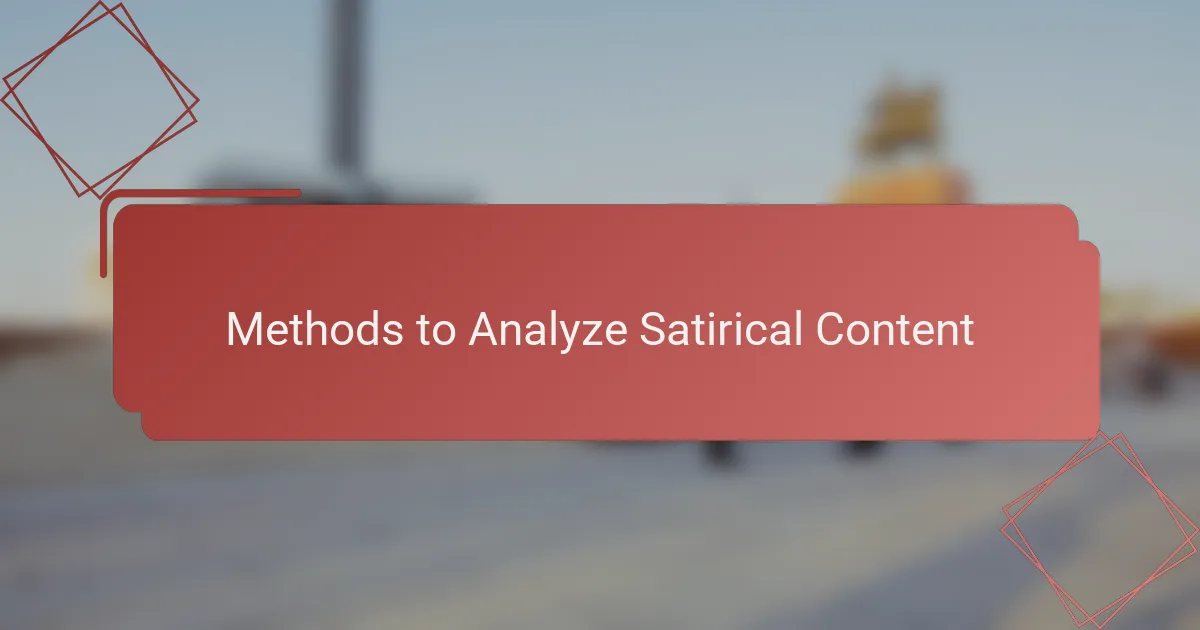
Methods to Analyze Satirical Content
When I first tackled John Oliver’s jokes, I realized that understanding the context behind his satire was key. I had to dig into the specific political events or policies he referenced to truly grasp the layers beneath his humor. Without this background, much of his wit felt like just clever wordplay rather than sharp political commentary.
Over time, I developed a straightforward approach that combined research and critical listening. This method transformed how I engaged with his content—it wasn’t just entertainment anymore but an insightful lens on current affairs. Here’s how I break down his jokes to uncover the deeper message:
- Identify the target of the satire (person, policy, institution)
- Research the relevant political context or controversies
- Note discrepancies between official statements and underlying realities
- Analyze the use of irony or exaggeration for emphasis
- Consider the tone and delivery to understand emotional undertones
- Reflect on how the joke challenges common perceptions or biases
- Cross-check facts and figures mentioned for accuracy and implications
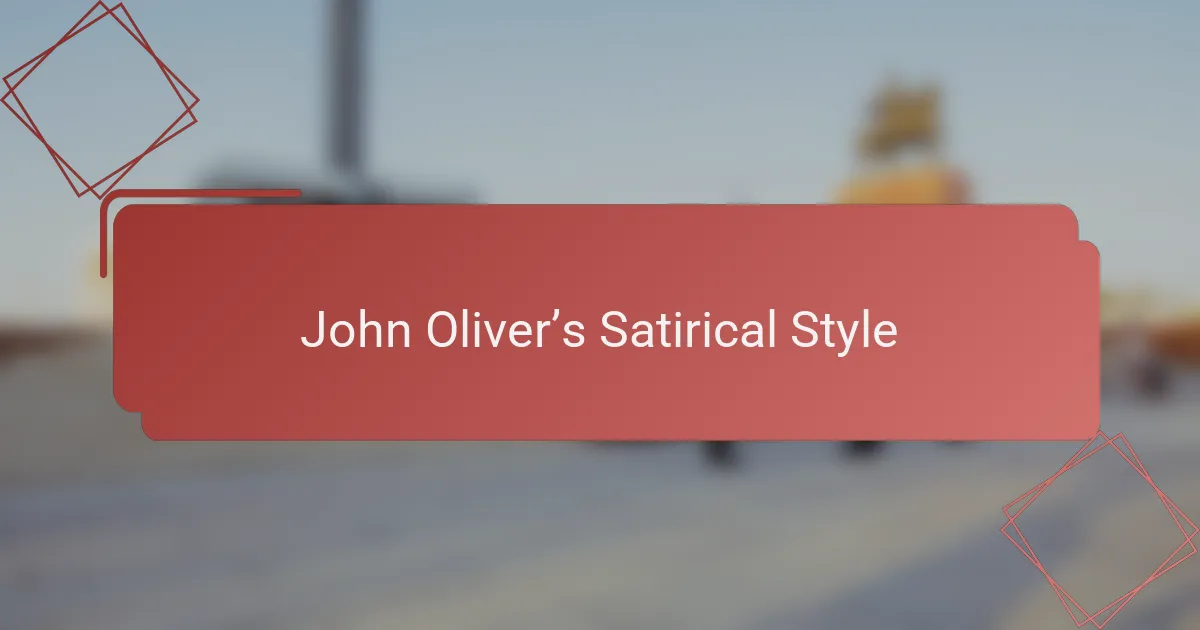
John Oliver’s Satirical Style
John Oliver’s satirical style is a unique blend of sharp wit and deep investigative research. I’ve noticed that his humor often starts with a relatable observation, then he skillfully pulls you into the absurdity of political realities. It’s this mix of clarity and comedy that makes his jokes hit harder for me — they don’t just make me laugh, they make me think.
| Aspect | John Oliver’s Approach |
|---|---|
| Humor Style | Mix of sarcasm, irony, and storytelling |
| Research Depth | Extensive, often highlighting overlooked details |
| Delivery | Conversational yet sharp and pointed |
| Emotional Impact | Combines humor with serious reflection |
| Audience Engagement | Uses relatable scenarios to draw viewers in |
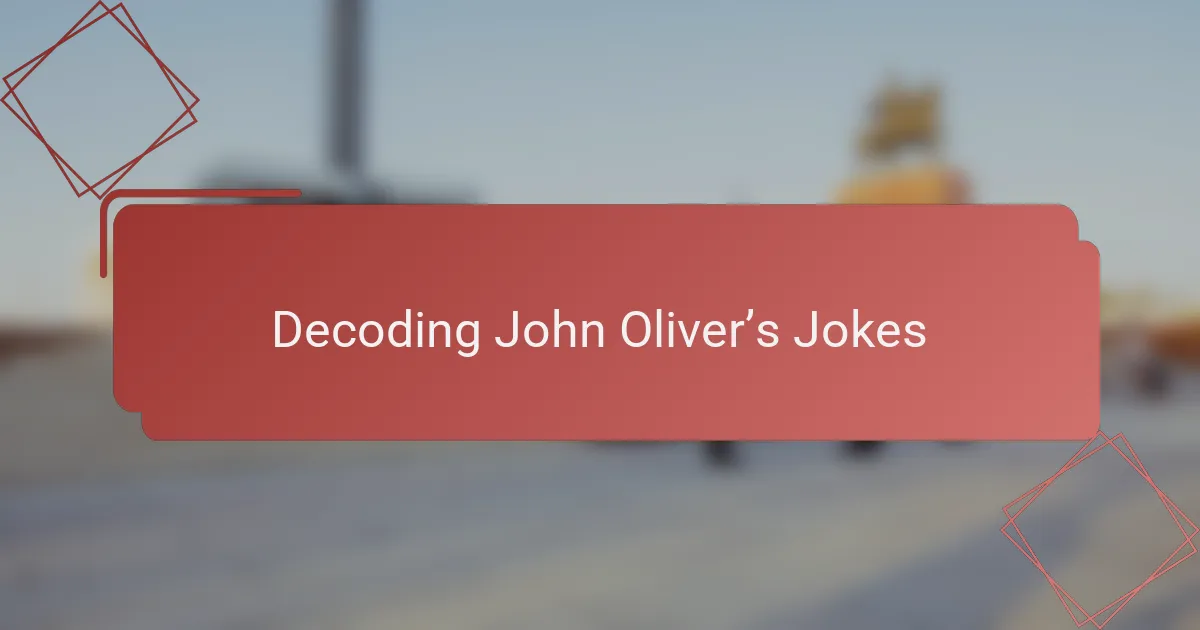
Decoding John Oliver’s Jokes
Decoding John Oliver’s jokes requires more than just catching the punchline; it’s about unpacking layers of context and irony that he skillfully weaves into his commentary. From my experience, the humor often hits hardest when you recognize the political or social absurdity behind it, making the laughter feel like a shared nudge towards awareness. Sometimes, I find myself chuckling not just at the joke, but at the raw truth it exposes—John Oliver doesn’t just entertain, he educates with wit.
| Elements of John Oliver’s Jokes | What They Mean to Me |
|---|---|
| Satirical Exaggeration | Highlights the ridiculousness of political events, making complex topics relatable and funny. |
| Irony and Sarcasm | My go-to tool for detecting hidden criticism behind the humor, encouraging deeper reflection. |
| Contextual References | Understanding the background story often turns a simple joke into a powerful commentary. |
| Sharp Timing | Creates surprise and amplifies impact, which keeps me engaged and intrigued every episode. |
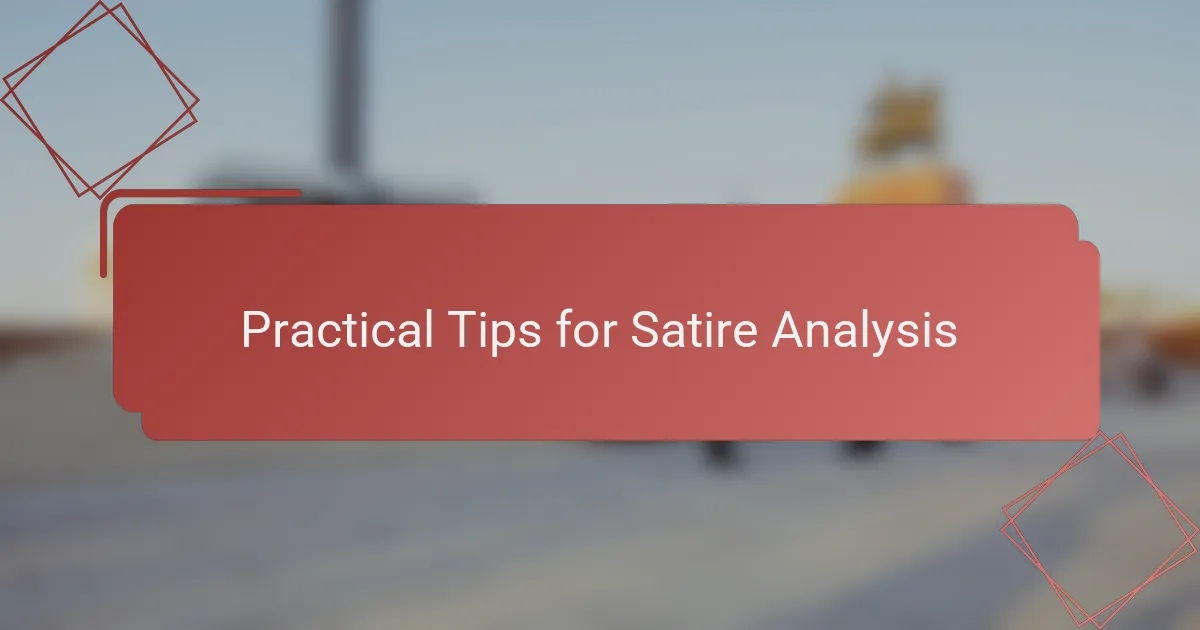
Practical Tips for Satire Analysis
Satire can sometimes feel like a puzzle, and breaking it down requires more than just catching the punchline. When I first started analyzing John Oliver’s jokes, I realized the importance of understanding the underlying context—knowing the political events or figures he’s referencing makes the humor click instantly. It’s like unlocking a door; once you know the background, the satire opens up to reveal sharper meanings and critiques.
Over time, I developed a set of practical strategies to help me navigate the layered humor. These tips have made my viewing experience more insightful and enjoyable, and I’m confident they’ll help you too:
- Research the Topic: Look up recent news or events related to the joke for context.
- Identify the Target: Determine who or what the joke is criticizing.
- Analyze Tone and Delivery: Notice how John Oliver uses sarcasm, exaggeration, or irony to make his point.
- Consider the Audience: Reflect on how the joke appeals to viewers’ beliefs or emotions.
- Connect Facts with Humor: See how real information is twisted to reveal absurdities.
- Stay Open-minded: Remember that satire often challenges your preconceptions and pushes you to think deeper.
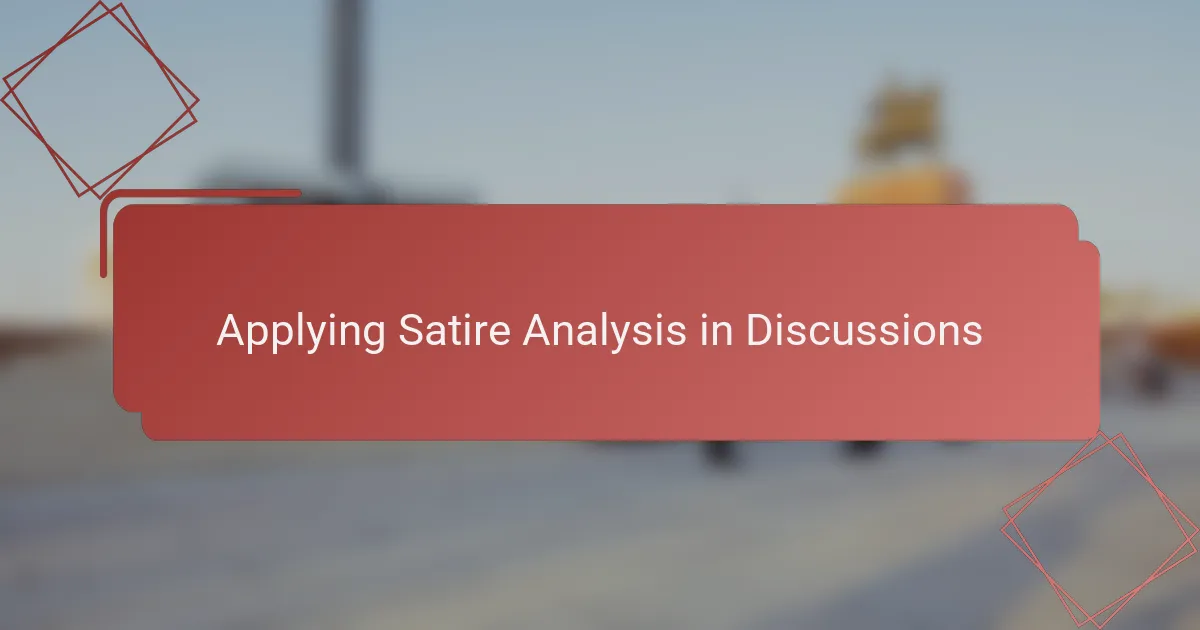
Applying Satire Analysis in Discussions
Applying satire analysis in discussions has transformed the way I engage with political conversations. Rather than just exchanging opinions, I find myself peeling back layers of meaning to understand the subtle critiques woven into jokes. Have you ever noticed how a seemingly simple quip suddenly opens a window to deeper political realities? That moment of realization is what makes satire so powerful in dialogue.
When I started applying these analytical skills during debates or casual chats, I noticed a shift in how others responded. Instead of dismissing humor as mere entertainment, we began unpacking the underlying messages together. It’s amazing how recognizing satire encourages more thoughtful, less reactive exchanges. This approach turns laughter into learning, and I’ve seen firsthand how it can bridge divides by revealing common frustrations or hopes.
But here’s a question I ask myself regularly: how can I ensure the satire really lands with others who might not share my background knowledge? My solution has been to gently guide the conversation, providing context or highlighting the emotional undertones behind the jokes. This not only enriches the discussion but also makes the humor more inclusive and impactful. Applying satire analysis isn’t just an intellectual exercise—it’s a way to deepen connection and understanding through laughter.
